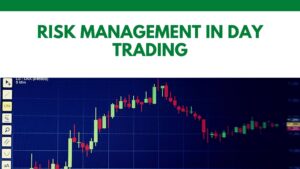Risk Management in Day Trading

Introduction
Day exchanging is a high-risk, high-reward system in the realm of monetary business sectors. While it offers the potential for significant benefits, it additionally accompanies the gamble of huge misfortunes. A successful gamble on the board is significant for informal investors to make due and flourish in this speedy and unstable climate. In this post, we will investigate the standards and procedures of Risk Management in Day Trading.
Understanding Day Trading
Day exchanging includes trading monetary instruments inside a similar exchanging day. The objective is to benefit from momentary cost developments, frequently exploiting intraday unpredictability. Brokers might zero in on different resources, including stocks, monetary forms, wares, and digital currencies. Because of the fast speed and incessant exchanges, day exchanging conveys intrinsic dangers.
Importance of Risk Management in Day Trading
Without proper risk management, day trading can lead to devastating losses. The primary objective of risk management is to protect capital and ensure that a series of losses doesn’t wipe out the trader’s account. Effective risk management can also help maintain emotional discipline and reduce stress in a high-pressure trading environment.
Risk Management Strategies
1. Set Clear Stop-Loss Orders
A stop-loss order is a predetermined price at which a trader will exit a losing trade. It acts as a safety net, limiting potential losses. Setting clear stop-loss levels before entering a trade is a fundamental aspect of risk management in day trading. Traders should calculate their stop-loss levels based on technical analysis, support and resistance levels, and the amount of capital they are willing to risk on the trade.
2. Position Sizing-Risk Management in Day Trading
Position measuring includes deciding how much funding to assign to each exchange. A typical guideline isn’t to gamble more than 1-2% of your exchanging capital on a solitary exchange. This approach guarantees that a progression of misfortunes doesn’t prompt a critical drawdown in your record.
3. Risk-Reward Ratio
Day traders should always assess the risk-reward ratio before entering a trade. This ratio represents the potential profit compared to the potential loss. A favorable risk-reward ratio should be at least 1:2, meaning that the potential reward is at least twice the potential risk. This ensures that profitable trades can outweigh losing trades over time.
4. Diversification-Risk Management in Day Trading
Diversification is a risk management strategy that involves spreading your capital across different assets or markets. By not putting all your capital in a single trade, you reduce the impact of a significant loss on your overall portfolio. However, it’s essential to avoid over-diversification, which can lead to diluted focus and reduced effectiveness.
Read here – Best Index Fund Basics
5. Risk Tolerance Assessment
Prior to setting out on day exchanging, surveying your gamble tolerance is fundamental. Various dealers have shifting degrees of hazard craving. It’s essential to be straightforward with yourself about how much gambling you can easily deal with, both monetarily and inwardly.
6. Trading Plan-Risk Management in Day Trading
A well-defined trading plan is a cornerstone of risk management. It should outline your trading strategy, risk parameters, and contingency plans for different scenarios. Sticking to your plan helps you avoid impulsive and emotionally driven decisions.
Read here – Intraday Trading Strategies
7. Avoid Overtrading-Risk Management in Day Trading
Overtrading, or making such a large number of exchanges a brief period, is a typical entanglement for informal investors. It can prompt weariness, expanded risk openness, and unfortunate navigation. Put forth every day or week-by-week line on the number of exchanges you’ll execute to keep up with discipline and forestall overtrading.
8. Constant Monitoring and Analysis
Effective risk management requires constant monitoring of your positions and regular review of your trading strategies. As market conditions change, your risk management approach may need adjustments. Learn from your past trades and adapt your risk management techniques accordingly.
Conclusion-Risk Management in Day Trading
Day exchanging can be exceptionally productive, however, it accompanies innate dangers. Risk the executives is the way to long-haul progress in this speedy climate.
Read here – American Funds Performance
By executing procedures, for example, setting stop-misfortune orders, legitimate position estimating, and keeping an exchange plan, informal investors can safeguard their capital and explore the business sectors with more prominent certainty.
Recall that risk the executives is certainly not a one-size-fits-all arrangement; it ought to be custom-made to your singular gamble resilience and exchanging style. Continuously exchange dependably and never risk beyond what you can bear to lose.

